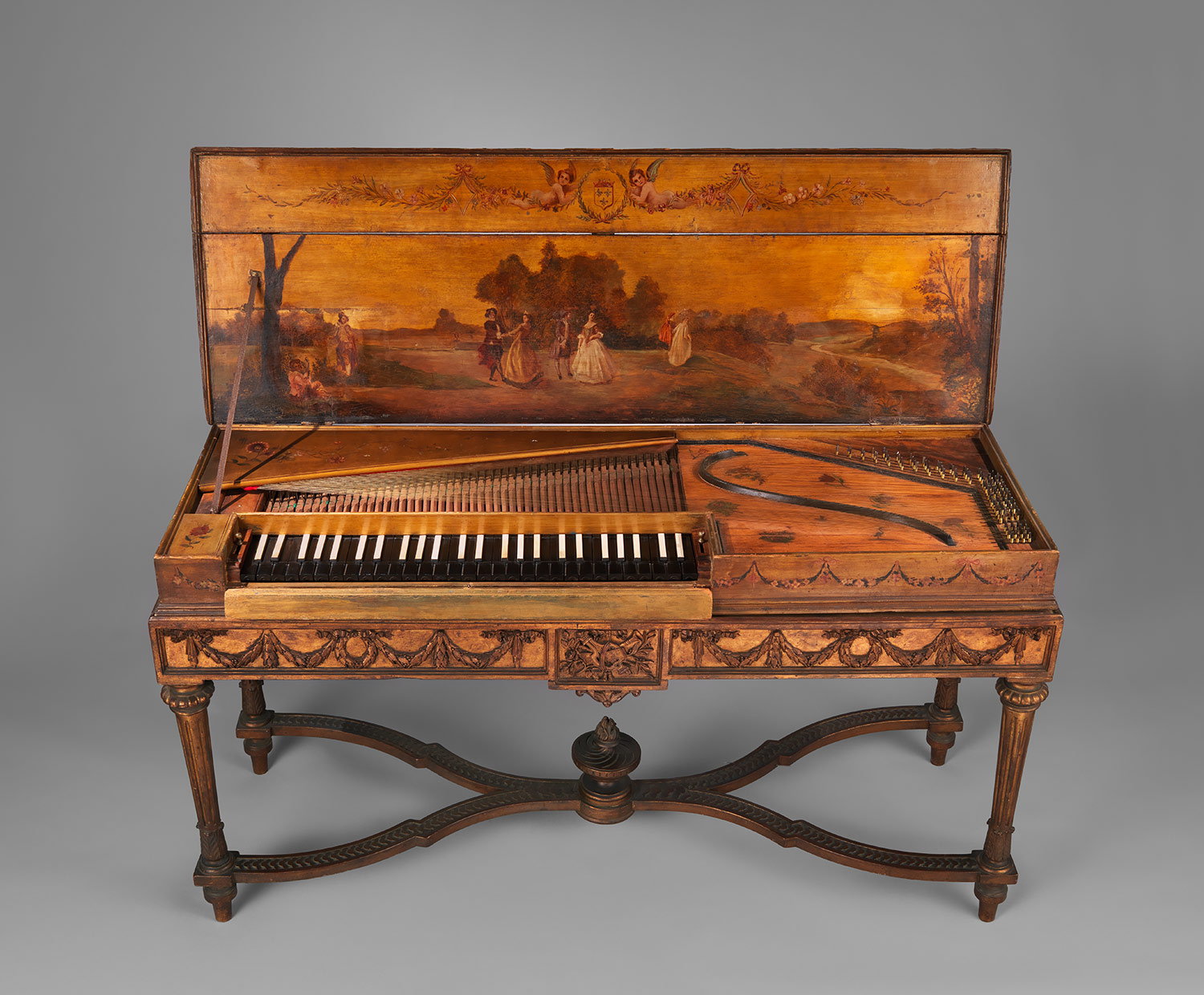Clavichord:
The oldest of the stringed keyboard instruments, it was very popular throughout Western Europe until the 19th century. The clavichord is the simplest of the stringed keyboards but very expressive. It is generally a solo instrument but goes well with voice. It is touch-sensitive for both volume and pitch. The harder one plays, the louder the instrument but the pitch will also change. This is because pressing the key harder causes the string to bend. The purpose of this is that it provides a wonderful vibrato effect by pressing repeatedly harder on the keys while holding them down. An unusual instrument in that a pair of strings might serve several keys. This reduces the number of strings. The strings are contained in a rectangular frame and strings run transversely along the length of the long sides and so are at right angles to the player.

 Bach on replica of 1670 Gellinger clavichord (Preludio from Violin Partita No. 3, played by Ryan Layne Whitney) - YouTube
Bach on replica of 1670 Gellinger clavichord (Preludio from Violin Partita No. 3, played by Ryan Layne Whitney) - YouTube
Virginal:
The virginal is a small harpsichord having only one set of strings and one keyboard console. Exactly how the instrument acquired its name is under dispute. Some thought it might have been named in honor of Elizabeth I known as the Virgin Queen but this is unlikely. Probably the name is linked to female performers or some feel that the sound of the instrument is like that of a maiden girl. Regardless, it is an exquisite instrument. Like the clavichord, it is a rectangular instrument but far more complex. Some virginals are rather polygonal in shape to suit the transverse direction of the strings. The clip below uses the term “muselar” which means that the keyboard is placed on the right side of the machine. There are also left-sided virginals which are called “spinett.” There is only one known center-mounted keyboard on a virginal which belonged to the Duke of Cleves. No one knows if this was the only one made or whether it was an early design that was later ignored. Unlike the clavichord, the virginal and harpsichord are not touch sensitive. As the key is pressed, a wooden slat called a jack which has a quill or plectrum mounted on it moves up and plucks the string. When the key is released, the jack falls into its original position plucking the string again on the way down producing a double note. Touch sensitivity would produce a muddled tone if the keys were played hard. Likewise the double action precludes the ability to add vibrato.

 Muselar Virginal Demonstration - YouTube
Muselar Virginal Demonstration - YouTube